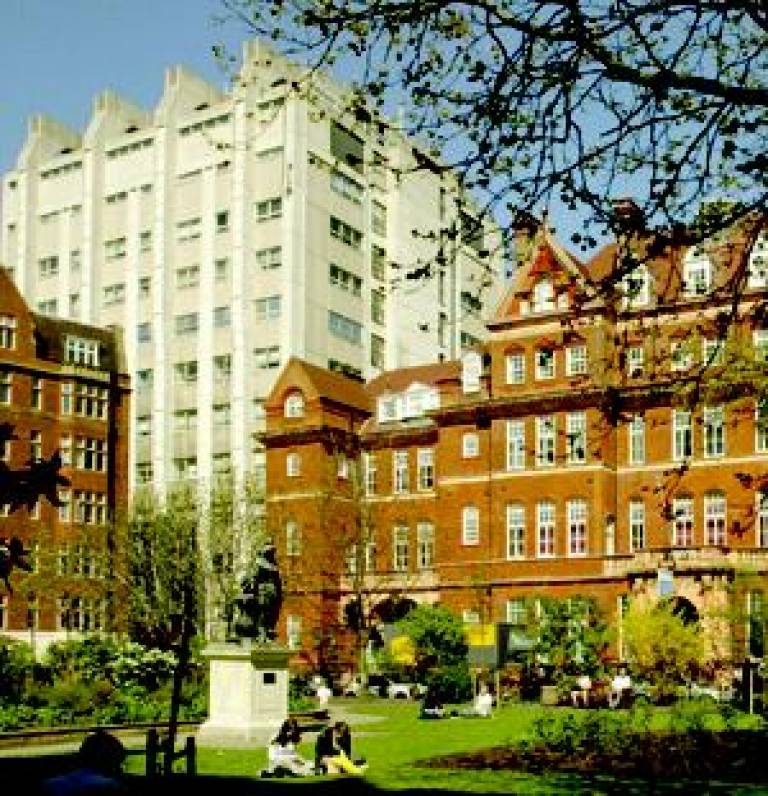UCL in the News: 3D models take the guesswork out of brain surgery
3 September 2008
Nic Fleming, 'New Scientist' "OK, let's do it," says a tall man in pale green surgical scrubs.
 "Lights please." As the lights fade, Stefan Brew stands silhouetted by the glow from a bank of X-ray monitors. In front of him a child's hair peeps from under a blue drape that gently rises and falls as the young patient breathes. …
"Lights please." As the lights fade, Stefan Brew stands silhouetted by the glow from a bank of X-ray monitors. In front of him a child's hair peeps from under a blue drape that gently rises and falls as the young patient breathes. …
James, the 8-year-old patient, suffered a stroke in February and required emergency surgery to drain a brain haemorrhage. Then last month, at London's Great Ormond Street Hospital for Children, Brew's team found the cause: James had a dangerous arteriovenous malformation (AVM), an abnormal cluster of potentially leaky connections between veins and arteries. During the procedure described above - called an embolisation - Brew sealed off the AVM by injecting a hard-setting plastic liquid through a catheter. …
Around 1 in 10 patients suffer haemorrhages as a result of embolisation procedures.
"At the moment we do AVMs more or less blind," says Brew, an interventional neuroradiologist at the [UCL Partners hospital] National Hospital for Neurology and Neurosurgery in London. "We eliminate as much of it as we can, but it's basically a blunderbuss approach."
Now that promises to change. A new imaging system aims to give surgeons a detailed, near real-time picture of the vasculature - and its abnormalities - and so remove much of the guesswork.
Called "Grid-enabled neurosurgical imaging simulation", or Genius, the system fires off brain scans to a network of supercomputers. These then use their collective processing might to generate an accurate 3D model of the unique blood flow patterns in a patient's brain, showing the surgeon visual representations of critical parameters such as blood pressure and flow rate. …
The imaging side of Genius is being made possible by a brain scanning technique called rotational 3D angiography. This builds up a 3D image of the vasculature from large numbers of 2D X-ray slices shot from different angles around a 180-degree arc. …
However, the shape of the blood vessels does not reveal the key pressures and flow velocities that may indicate where ruptures are likely. So Marco Mazzeo and Peter Coveney [UCL Chemistry] have written software that calculates these critical parameters, as well as stresses on artery and vein walls, based on a handful of pressure measurements made by the surgeon using a special catheter. …
Surgeons working on a patient also need such images to be bang up to date. …
That means processing vast amounts of data to constantly update the model - around a trillion calculations per second.
To do this, Genius will access 20 supercomputers across the US's TeraGrid and the UK's National Grid Service, which offer a dedicated processing infrastructure for scientists. …
"These procedures involve life and death decision-making," says Coveney. "The goal is to enhance the ability of clinicians to make these decisions through information technology and high-performance computing." …
It's part of a wider effort to model organs or body systems under the umbrella of the Virtual Physiological Human (VPH) project. …
 Close
Close

